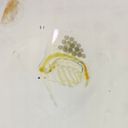Diplostraca
Diplostraca
Classification
- Phylum: Arthropoda
- Subphylum: Crustacea
- Class: Branchiopoda
- Order: Diplostraca
Pronunciation
How to pronounce Diplostraca: /dɪˈplɒstrəkə/
These audio files are automatically generated. While they are not always 100% accurate, they are a good starting point.
Images






Summary
The Diplostraca, commonly known as water fleas, are a superorder of small, mostly freshwater crustaceans primarily feeding on organic matter. They exhibit a unique life cycle dominated by cyclical parthenogenesis, allowing them to survive varying environmental conditions.
Physical Characteristics
Most diplostracan species are 0.2–6.0 mm (0.01–0.24 in) long, with the exception of Leptodora, which can be up to 18 mm (0.71 in) long. They have a down-turned head, a single median compound eye, and a carapace covering the thorax and abdomen. They possess two pairs of antennae; the first are small and unsegmented, while the second are large, segmented, and branched.
Identification Tips
The pattern of setae on the second antennae is useful for identification. The head bears a rostrum or 'beak', and the presence of a single ocellus can also help differentiate genera.
Habitat
Most species inhabit freshwater and other inland water bodies, with a few adapted to marine environments.
Distribution
Over 1000 species are known, with many more undescribed. Some species have cosmopolitan distributions due to their ability to produce dormant eggs that survive harsh conditions.
Diet
Diplostracans primarily feed on organic detritus and bacteria, utilizing their small mouthparts for this purpose.
Life Cycle
The life cycle is dominated by cyclical parthenogenesis, with asexual reproduction occurring in favorable conditions, followed by sexual reproduction in harsh conditions to produce dormant eggs.
Reproduction
Most species reproduce asexually through parthenogenesis, occasionally mating to produce resting eggs.
Predators
Predators include larger aquatic organisms such as fish and amphibians.
Ecosystem Role
Diplostracans play a significant role in aquatic food webs, recycling nutrients and serving as prey for a variety of aquatic animals.
Evolution
The oldest confirmed records date back to the Early Jurassic, indicating their origins in the late Paleozoic with a radiation prior to the Jurassic.
Similar Taxa
- Cyclestherida
- Anostraca
Tags
- freshwater
- crustaceans
- water fleas
- diplostraca
- branchiopoda